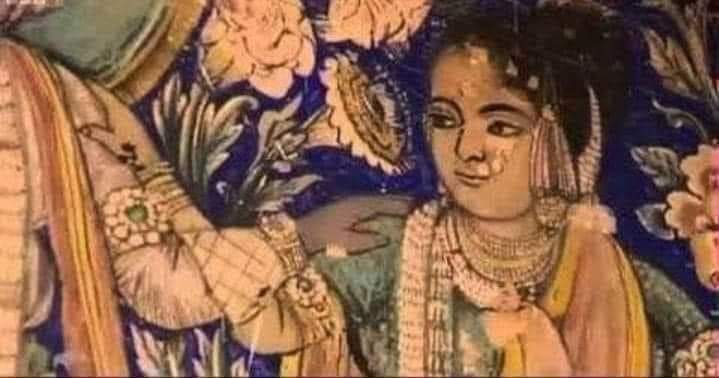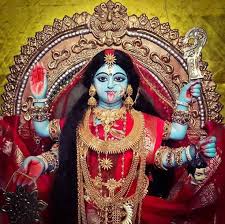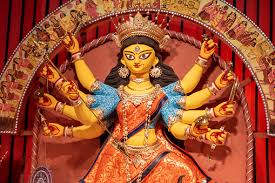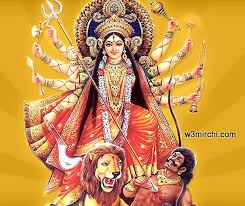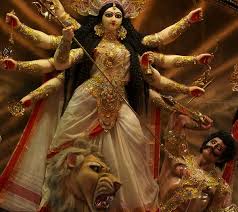गणितज्ञ “लीलावती” का नाम हममें से अधिकांश लोगों ने नहीं सुना है, उनके बारे में कहा जाता है कि वो पेड़ के पत्ते तक गिन लेती थीं,,
शायद ही कोई जानता हो कि आज यूरोप सहित विश्व के सैंकड़ो देश जिस गणित की पुस्तक से गणित को पढ़ा रहे हैं, उसकी रचयिता भारत की एक महान गणितज्ञ महर्षि भास्कराचार्य की पुत्री लीलावती हैं, आज गणितज्ञों को गणित के प्रचार और प्रसार के क्षेत्र में लीलावती पुरूस्कार से सम्मानित किया जाता है
आइए जानते हैं महान गणितज्ञ लीलावती जी के बारे में जिनके नाम से गणित को पहचाना जाता था :-
दसवीं सदी की बात है, दक्षिण भारत में भास्कराचार्य नामक गणित और ज्योतिष विद्या के एक बहुत बड़े पंडित थे। उनकी कन्या का नाम लीलावती था।
वही उनकी एकमात्र संतान थी। उन्होंने ज्योतिष की गणना से जान लिया कि ‘वह विवाह के थोड़े दिनों के ही बाद विधवा हो जाएगी।’
उन्होंने बहुत कुछ सोचने के बाद ऐसा लग्न खोज निकाला, जिसमें विवाह होने पर कन्या विधवा न हो। विवाह की तिथि निश्चित हो गई। जलघड़ी से ही समय देखने का काम लिया जाता था।
एक बड़े कटोरे में छोटा-सा छेद कर पानी के घड़े में छोड़ दिया जाता था। सूराख के पानी से जब कटोरा भर जाता और पानी में डूब जाता था, तब एक घड़ी होती थी।
पर विधाता का ही सोचा होता है। लीलावती सोलह श्रृंगार किए सजकर बैठी थी, सब लोग उस शुभ लग्न की प्रतीक्षा कर रहे थे कि एक मोती लीलावती के आभूषण से टूटकर कटोरे में गिर पड़ा और सूराख बंद हो गया; शुभ लग्न बीत गया और किसी को पता तक न चला।
विवाह दूसरे लग्न पर ही करना पड़ा। लीलावती विधवा हो गई, पिता और पुत्री के धैर्य का बांध टूट गया। लीलावती अपने पिता के घर में ही रहने लगी।
पुत्री का वैधव्य-दु:ख दूर करने के लिए भास्कराचार्य ने उसे गणित पढ़ाना आरंभ किया। उसने भी गणित के अध्ययन में ही शेष जीवन की उपयोगिता समझी।
थोड़े ही दिनों में वह उक्त विषय में पूर्ण पंडिता हो गई। पाटी-गणित, बीजगणित और ज्योतिष विषय का एक ग्रंथ ‘सिद्धांतशिरोमणि’ भास्कराचार्य ने बनाया है। इसमें गणित का अधिकांश भाग लीलावती की रचना है।
पाटीगणित के अंश का नाम ही भास्कराचार्य ने अपनी कन्या को अमर कर देने के लिए ‘लीलावती’ रखा है।
भास्कराचार्य ने अपनी बेटी लीलावती को गणित सिखाने के लिए गणित के ऐसे सूत्र निकाले थे जो काव्य में होते थे। वे सूत्र कंठस्थ करना होते थे।
उसके बाद उन सूत्रों का उपयोग करके गणित के प्रश्न हल करवाए जाते थे।कंठस्थ करने के पहले भास्कराचार्य लीलावती को सरल भाषा में, धीरे-धीरे समझा देते थे।
वे बच्ची को प्यार से संबोधित करते चलते थे, “हिरन जैसे नयनों वाली प्यारी बिटिया लीलावती, ये जो सूत्र हैं…।” बेटी को पढ़ाने की इसी शैली का उपयोग करके भास्कराचार्य ने गणित का एक महान ग्रंथ लिखा, उस ग्रंथ का नाम ही उन्होंने “लीलावती” रख दिया।
आजकल गणित एक शुष्क विषय माना जाता है पर भास्कराचार्य का ग्रंथ ‘लीलावती‘ गणित को भी आनंद के साथ मनोरंजन, जिज्ञासा आदि का सम्मिश्रण करते हुए कैसे पढ़ाया जा सकता है,
इसका नमूना है। लीलावती का एक उदाहरण देखें- ‘निर्मल कमलों के एक समूह के तृतीयांश, पंचमांश तथा षष्ठमांश से क्रमश: शिव, विष्णु और सूर्य की पूजा की, चतुर्थांश से पार्वती की और शेष छ: कमलों से गुरु चरणों की पूजा की गई।
अये, बाले लीलावती, शीघ्र बता कि उस कमल समूह में कुल कितने फूल थे..?‘
उत्तर-120 कमल के फूल।
वर्ग और घन को समझाते हुए भास्कराचार्य कहते हैं ‘अये बाले,लीलावती, वर्गाकार क्षेत्र और उसका क्षेत्रफल वर्ग कहलाता है।
दो समान संख्याओं का गुणन भी वर्ग कहलाता है। इसी प्रकार तीन समान संख्याओं का गुणनफल घन है और बारह कोष्ठों और समान भुजाओं वाला ठोस भी घन है।‘
‘मूल” शब्द संस्कृत में पेड़ या पौधे की जड़ के अर्थ में या व्यापक रूप में किसी वस्तु के कारण, उद्गम अर्थ में प्रयुक्त होता है।
इसलिए प्राचीन गणित में वर्ग मूल का अर्थ था ‘वर्ग का कारण या उद्गम अर्थात् वर्ग एक भुजा‘।
इसी प्रकार घनमूल का अर्थ भी समझा जा सकता है। वर्ग तथा घनमूल निकालने की अनेक विधियां प्रचलित थीं।
लीलावती के प्रश्नों का जबाब देने के क्रम में ही “सिद्धान्त शिरोमणि” नामक एक विशाल ग्रन्थ लिखा गया, जिसके चार भाग हैं- (1) लीलावती (2) बीजगणित (3) ग्रह गणिताध्याय और (4) गोलाध्याय।
‘लीलावती’ में बड़े ही सरल और काव्यात्मक तरीके से गणित और खगोल शास्त्र के सूत्रों को समझाया गया है।
अकबर के दरबार के विद्वान फैजी ने सन् 1587 में “लीलावती” का फारसी भाषा में अनुवाद किया।
अंग्रेजी में “लीलावती” का पहला अनुवाद जे. वेलर ने सन् 1716 में किया।
कुछ समय पहले तक भी भारत में कई शिक्षक गणित को दोहों में पढ़ाते थे। जैसे कि पन्द्रह का पहाड़ा…तिया पैंतालीस, चौके साठ, छक्के नब्बे… अट्ठ बीसा, नौ पैंतीसा…।
इसी तरह कैलेंडर याद करवाने का तरीका भी पद्यमय सूत्र में था, “सि अप जूनो तीस के, बाकी के इकतीस, अट्ठाईस की फरवरी चौथे सन् उनतीस!” इस तरह गणित अपने पिता से सीखने के बाद लीलावती भी एक महान गणितज्ञ एवं खगोल शास्त्री के रूप में जानी गईं ,,
मनुष्य के मरने पर उसकी कीर्ति ही रह जाती है अतः आज गणितज्ञो को लीलावती पुरूस्कार से सम्मानित किया जाता है। हमारे पास बहुत कीमती इतिहास है जिसे छोड़कर हम आधुनिकता की दौड़ में विदेशों की नकल कर रहे हैं,,
Most of us have not heard the name of Mathematician “Lilavati”, it is said about her that she used to count till the leaves of the tree,
Hardly anyone knows that the mathematics book from which hundreds of countries of the world including Europe are teaching mathematics, its author is Lilavati, the daughter of a great mathematician of India, Maharishi Bhaskaracharya, today Mathematicians are involved in the promotion and dissemination of mathematics. is awarded the prize
Let us know about the great Mathematician Lilavati ji, by whose name mathematics was known :-
It is a matter of tenth century, there was a great scholar of mathematics and astrology named Bhaskaracharya in South India. His daughter’s name was Lilavati.
She was his only child. He came to know from the calculation of astrology that ‘she will become a widow after a few days of marriage.’
After thinking a lot, he found such a wedding, in which the girl does not become a widow after getting married. The date of marriage has been fixed. The work of watching the time was taken from the water clock itself.
A small hole was made in a big bowl and left in the pitcher of water. When the bowl was filled with water from the hole and was immersed in water, then there was a clock. But the thought of the creator is there. Lilavati was sitting decorated with sixteen adornments, everyone was waiting for that auspicious marriage when a pearl broke from Lilavati’s jewelery and fell into the bowl and the hole was closed; The auspicious wedding passed and no one even came to know.
The marriage had to be done on the second marriage only. Lilavati became a widow, the dam of patience between father and daughter broke. Lilavati started living in her father’s house. Bhaskaracharya started teaching mathematics to his daughter to remove her widowhood. He also understood the usefulness of the rest of his life in the study of mathematics.
Within a few days, she became a complete scholar in that subject. Bhaskaracharya has made a treatise ‘Siddhantashiromani’ on the subject of Pati-Mathematics, Algebra and Astrology. Most of the mathematics in this is the creation of Lilavati.
Bhaskaracharya has named the part of Patiganit as ‘Lilavati’ to make his daughter immortal.
In order to teach mathematics to his daughter Lilavati, Bhaskaracharya had extracted such formulas of mathematics which were used in poetry. Those formulas had to be memorized.
After that, mathematical problems were solved using those formulas. Bhaskaracharya used to explain Lilavati in simple language, slowly, before memorizing.
He used to lovingly address the girl child, “Lilavati, dear daughter with eyes like a deer, these formulas are….” Using this style of teaching his daughter, Bhaskaracharya wrote a great treatise on mathematics, which he named “Lilavati”.
Nowadays mathematics is considered a dry subject, but Bhaskaracharya’s book ‘Lilavati’ how mathematics can also be taught by mixing entertainment, curiosity etc. with pleasure,
This is a sample. See an example from Lilavati – ‘The third, fifth and sixth of a group of pure lotuses worshiped Shiva, Vishnu and Surya respectively, the fourth of Parvati and the remaining six lotuses worshiped the Guru’s feet.
Come, Bale Lilavati, tell me quickly how many flowers were there in that lotus group..?’ Answer – 120 Lotus flowers.
Explaining square and cube, Bhaskaracharya says ‘Aye Bale, Lilavati, square area and its area is called square.
Multiplication of two equal numbers is also called square. Similarly, the product of three equal numbers is a cube and a solid with twelve cells and equal sides is also a cube.
The word “root” is used in Sanskrit in the sense of the root of a tree or plant, or in a broader sense, the origin of a thing.
Therefore, in ancient mathematics, the meaning of square root was ‘the cause or origin of the square i.e. square is one side’.
Similarly, the meaning of cube root can also be understood. There were many methods of extracting square and cube roots.
In order to answer Lilavati’s questions, a huge book called “Siddhanta Shiromani” was written, which has four parts – (1) Lilavati (2) Algebra, (3) Graha Ganitadhyaya and (4) Goladhyaya.
In ‘Lilavati’, the formulas of mathematics and astronomy have been explained in a very simple and poetic way.
Akbar’s court scholar Faizi translated “Lilavati” into Persian in 1587. The first translation of “Lilavati” into English was by J. Weller did it in 1716.
Until recently, many teachers in India used to teach mathematics in twos. Like the mountain of fifteen… thirty five, fours sixty, sixes ninety… eight twenty, nine twenty five….
Similarly, the method of remembering the calendar was also in the poetic formula, “Si up juno tiis ke, baaki ke thirty one, twenty eight February fourth year thirty nine!” In this way, after learning mathematics from her father, Lilavati also became known as a great mathematician and astronomer.
When a person dies, his fame remains, so today mathematicians are honored with the Lilavati Award. We have very valuable history leaving behind which we are copying foreign countries in the race of modernity.

